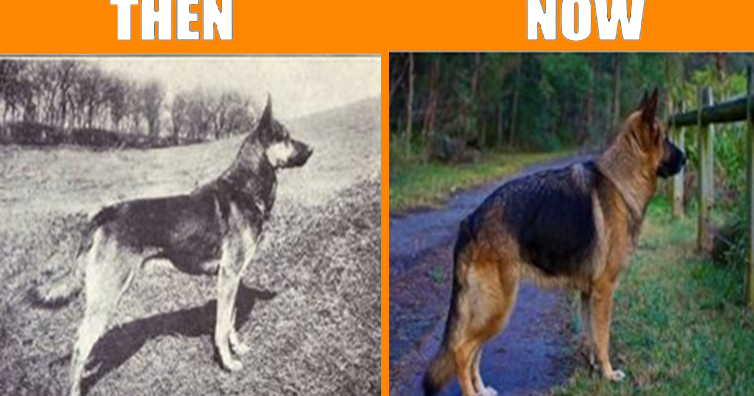Over time, breeders have selectively raised dogs in order to have specific physical and mental traits to appeal to future pet owners. Some of these traits, which breeders will attempt to manipulate, include:
- Demeanor,
- The texture of their coats,
- Size.
Unfortunately, designing breeds for a more desirable outcome can have negative effects on the dog itself. However, the risk of creating health burdens hasn’t stopped the intentional breeding of unhealthy dogs. Reviewing pictures of breeds from over 100 years ago in the 1915 book, Breeds of All Nations by W.E. Mason, it’s clear to see how breeds have visibly changed.
According to Science of Dogs, they haven’t just changed visually, but they’ve grown to become more unhealthy. Here are 8 dog breeds and how they’ve changed after a century of intensive breeding.
1. The Bull Terrier: These previously athletic dogs have been improperly bred over the years, which has caused a drastic change in appearance and health.
Due to the manipulated changes this breed has experienced, modern bull terriers often suffer from dental problems stemming from the fact that they have too many teeth. Mental deficiencies have also been a result of improper breeding, including compulsive tail-chasing.
2. The German Shepherd: 100 years ago, this breed was considered to be a medium sized dog and had many notable features. These have become distorted through intensive selective breeding.
German Shepherds of today are a whopping 30 pounds heavier, developed sloping backs, and a barrel-chest. Due to these changes, the breed often suffers leg problems with age.
3. The Pug: Pug’s are a very distinguishable breed, but they’ve only become this recognizable due to breeders continually attempting to exaggerate the dog’s features.
These forced changes have resulted in a number of health issues for the breed, including high blood pressure, low oxygenation, heart problems, and difficulty breathing.
4. The Boxer: Part of the boxer’s aesthetic appeal is their shorter faces, which breeders have continually tried to make even more emphasized. Unfortunately, shorter faces tend to result in more health problems.
Boxers of today have shorter and more upturned noses, which makes them more prone to breathing problems. Their short snouts also result in difficulty controlling their body temperature in the heat.
5. The Dachshund: While Dachshunds have always had small legs, they used to be proportionate to their bodies. The dachshund’s features have been exaggerated through intensive breeding.
Now, dachshunds have notably longer backs and necks, which have resulted in the legs shrinking to the point that their chests are almost touching the ground. The dachshund is at more at risk to suffer from intervertebral disc disease (IVDD) than any other dog breed.
6. The White Terrier: In 1915, this breed was known for its athleticism, great instincts, and overall high functionality. However, improper breeding has tarnished most of these initial qualities.
The breed has been intentionally stunted over time to make them smaller. This has made them significantly less athletic and has diminished the breed’s ability to follow their instincts.
 Animalia Life
Animalia Life
7. The St. Bernard: Back in 1915, St. Bernard dogs were known to be noble working canines, but unfortunately, intensive breeding has squandered that ability.
Now, St. Bernard dogs are over-sized compared to their ancestors, have shorter muzzles, and have been bred to have abundant skin. A number of diseases have come with these changes and their ability to work has diminished due to how fast they can now overheat.
8. The Basset Hound: There have been a number of notable physical changes to this breed since 1915. Improper breeding has caused even shorter legs, longer ears, and droopy eyes.
Now, Basset Hound bodies have gotten lower, which has resulted in vertebra problems. They also have excessive skin and their droopy eyes make them prone to entropion, a condition where the eyelid is turned inward, and ectropion, in which the eyelid is turned outward.
 VetStreet
VetStreet
















